Digital infrastructure is rapidly changing, and high-speed, high-capacity data transmission is in unprecedented demand. A cutting-edge development in this area is the advancement of optical transceiver technology. The QSFP-DD (Quad Small Form Factor Pluggable Double Density) transceivers have emerged as a critical component that has pushed network performance and scalability to new levels. In this article, we look at how QSFP-DD transceivers play a central role in contemporary data centers and telecom networks by unpacking their technical innovations, benefits, and applications. If you are a networking engineer, an IT decision maker, or simply love technology, then reading this will give you good insights into connectivity’s future and next-gen applications with respect to QSFP-DD.
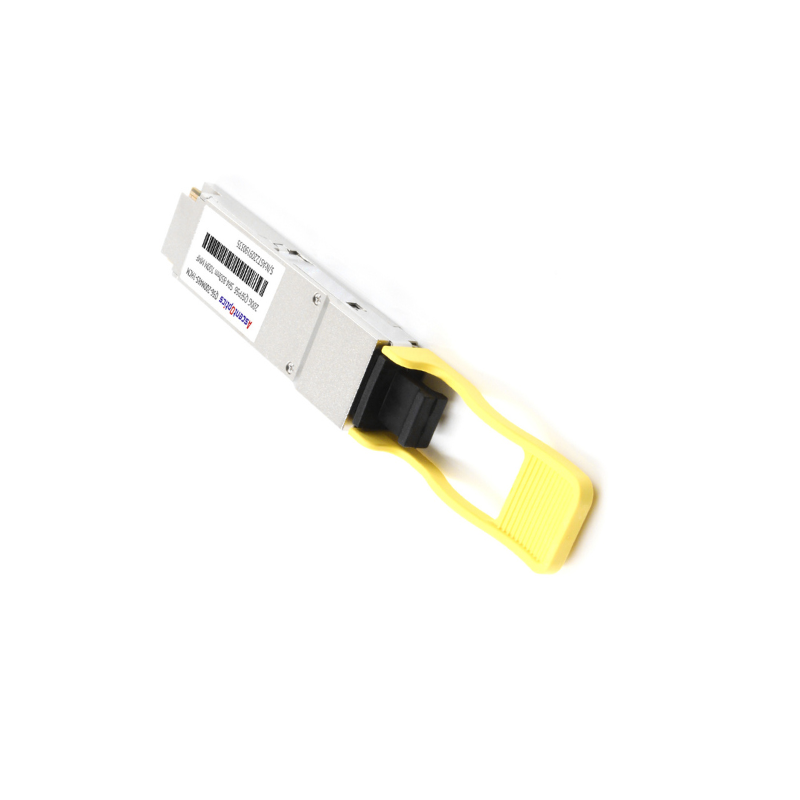
QSFP-DD is a compact and fast optical transceiver that supports increased data capacity in modern networks. While maintaining the QSFP form factor it doubles the number of high-speed electrical interfaces thus enabling data rates of 400 Gbps or more. For this, the transceiver has an 8-lane interface that can each transmit and receive data at speeds of up to 50 Gbps.
Given that QSFP-DD is backward compatible with earlier generations of QSFP devices, it can be integrated into existing infrastructures easily. It reduces power consumption and maximizes port density on network equipment. This makes it a critical component for data centers, cloud computing, and bandwidth-intensive applications.
The idea behind the new QSFP-DD form factor is to support higher data speeds of up to 400Gbps using eight lanes running at 50Gbps each. The double-density approach allows for more ports on network devices compared to standard QSFP modules, yet it remains small enough and compatible with current systems while enhancing performance in modern data centers and clouds. In this way, the designers balanced efficiency and scalability; thus making it a benchmark for future-proofing network technological measures.
QSFP-DD technology is now an excellent solution for modern networking environments and can be used to meet the ever-increasing demand for high-bandwidth applications through double density. A total of 400 Gbps is achievable on QSFP-DD using eight high-speed electrical lanes, each supporting 50 Gbps separately. Data centers and cloud services demand expansion which QSFP-DD supports compactly in this shape. This design reduces costs by increasing port density.
The increase in bandwidth has led to significant improvements in network infrastructure, mainly through densification. A recent study showed that network installations using QSFP-DD are 2.5 times more efficient and offer higher throughput than traditional modules, leading to energy savings. This allows enterprises to reduce operational costs while optimizing performance.
QSFP-DD’s ecosystem is steadily growing, with advancements in thermal management, signal integrity, and transceiver technologies. For example, these modules require active cooling and advanced materials for low-loss signal transmission to maintain high performance under heavy workloads. Taken together, these characteristics make QSFP-DD a future-proof solution for next-generation networking as it moves towards 800 Gbps and beyond.
The QSFP-DD connector is a high-density, high-performance solution aimed at current data center and networking uses. It’s an 8-lane electrical interface with support for rates of up to 800 Gbps. This design maintains compatibility with previous models of QSFP modules while taking advantage of improved thermal and signal integrity properties. Given its flexibility and scalability, the QSFP-DD connector system is an ideal option that meets the growing requirements of next-generation networks.
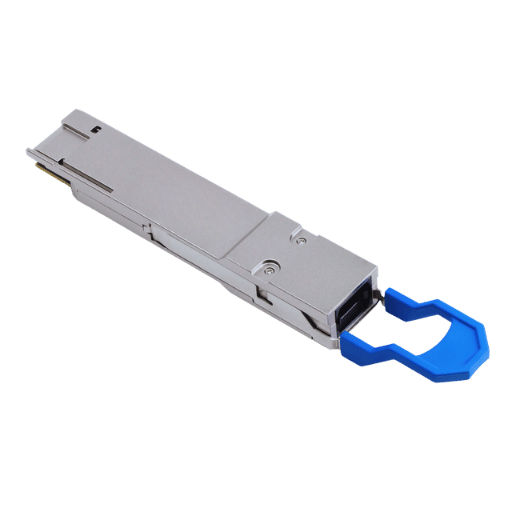
Data communication uses PAM4 (Pulse Amplitude Modulation with 4 Levels) and NRZ (Non-Return-to-Zero) as two main signaling techniques. NRZ codes data using two levels of signal to represent their zeros and ones. This provides ease and reliability for low data rates.
PAM4 uses 4-level signaling to double the data rate of NRZ within the same bandwidth, making it ideal for 400G+ high-speed Ethernet. However, PAM4 is more noise-sensitive and requires advanced error correction, increasing implementation complexity.
Their use depends on specific application requirements but both are vital to high-performance networking solutions.
Reliable and efficient transmission of high-speed data communication systems depends on the electrical interface and lane configuration. They affect power consumption, signal integrity, and the overall system performance. Below are the key details about electrical interfaces and lane configurations that are usually analyzed.
(1)Voltage Levels: Defines the signaling levels for data transmission. NRZ is based on two levels (usually 0 and 1), while PAM4 works in four unique levels.
(2)Impedance Matching: Ensuring minimum signal reflection at high frequencies to maintain signal integrity. Standard differential impedance for high-speed interfaces often ranges from 85 to 100 Ohms.
(3)Bit Error Rate (BER): This is a major factor in evaluating system reliability as well as signal quality. PAM4 BER requirements are more stringent than those of NRZ due to its greater vulnerability to noise and distortion issues.
(4)Signal-to-Noise Ratio (SNR): Especially in PAM4 which has smaller SNR margins than NRZ does, the clarity of transmitted signals largely depends on this ratio.
(5)Equalization Techniques: Feed-forward equalization (FFE) together with decision feedback equalization (DFE) among others can be used to minimize channel losses.
(1)Number of Lanes: Many high-bandwidth systems, such as 400G Ethernet, may use multi-lane architectures, e.g., 4 or 8 lanes of PAM4, to aggregate data rates.
(2)Lane Data Rate: Depending on the requirement of the application, each pathway bears 50 Gb/s, 25 Gb/s or even a higher speed for PAM4.
(3)Crosstalk Management: It is an interference between signals from adjacent pathways, especially in tightly packed interconnects.
(4)Channel Loss Budget: This typically presents the entire channel attenuation allowable for signal which is normally in dB to guarantee that acceptable performance occurs.
(5)Lane Multiplexing: It combines many low-rate signals into a single high-rate one hence facilitating high data rates.
(6)Clock Synchronization: Timing mistakes are avoided as well as data alignment is maintained across various paths by synchronizing the clock precisely.
Consideration of these electrical and lane configuration parameters can enable engineers to come up with strong and highly performing-communication systems capable of meeting modern networking applications’ strict demands.
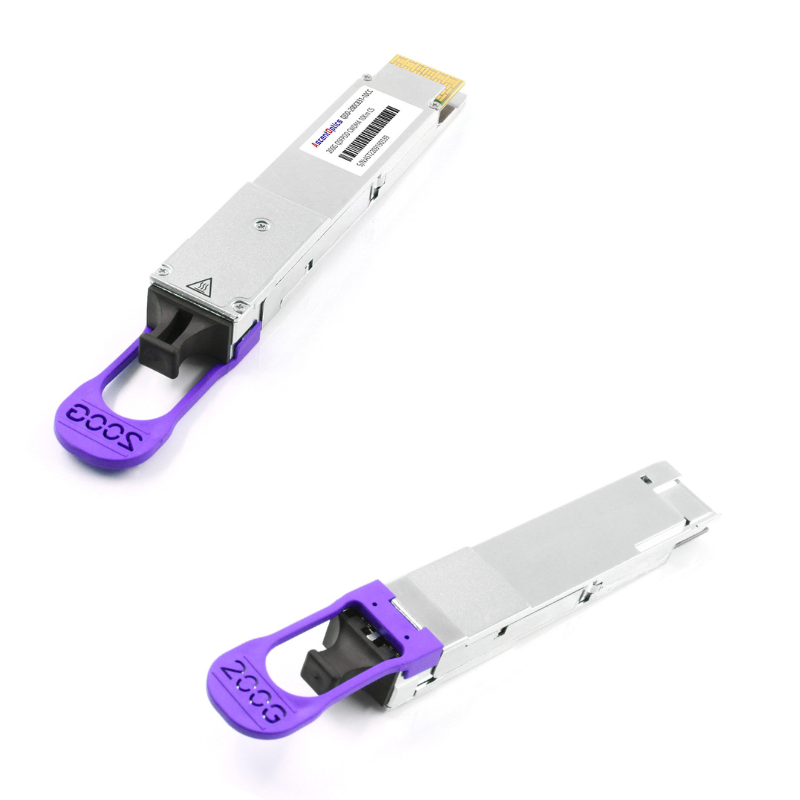
QSFP28 and QSFP-DD exhibit significant differences in port speeds. The QSFP28 module achieves an aggregate rate of 100 Gbps through four 25 Gbps lanes, supporting either NRZ or PAM4 modulation, making it suitable for current mainstream 100G network requirements. In contrast, the QSFP-DD (Double Density) module employs eight 100 Gbps electrical lanes with PAM4 modulation technology, elevating the total data rate to 800 Gbps.
Comparatively, QSFP-DD meets the demands of data centers and high-speed network environments requiring greater bandwidth and throughput, positioning it as an ideal solution for future-oriented applications.
In terms of port density, QSFP28 and QSFP-DD also demonstrate significant differences. The QSFP28 module supports only four electrical lanes, resulting in relatively lower port density per unit space, although it was already considered highly efficient in early network deployments.
In contrast, QSFP-DD adopts a double-density design, supporting eight electrical lanes within the same physical footprint, thereby substantially increasing port density and delivering higher capacity output compared to QSFP28. This advantage makes QSFP-DD particularly critical for high-density deployment scenarios such as hyperscale data centers.
In terms of scalability, QSFP28 and QSFP-DD also show clear differences. QSFP28 uses a traditional design, limited by its physical structure and lane count. This makes it hard to exceed current data rates and standards, restricting its upgrade potential.
In contrast, QSFP-DD features a double-density electrical interface. It supports higher speeds while maintaining forward compatibility. This allows network devices to upgrade smoothly without major infrastructure changes, meeting future high-speed networking demands.
QSFP28 and QSFP-DD also differ in thermal management and signal integrity. QSFP28 has relatively limited thermal handling capabilities for high-speed applications, making it less suitable for demanding thermal conditions.
In comparison, QSFP-DD features advanced thermal design and superior signal integrity. It maintains stable performance in high-speed, dense, and complex next-gen network environments, delivering a more reliable solution for high-bandwidth scenarios.
In terms of compatibility and future readiness, QSFP-DD demonstrates superior advantages.
While QSFP28 offers limited backward compatibility options that struggle to meet evolving network demands, QSFP-DD adopts a compatibility-driven design. It maintains backward compatibility with legacy QSFP modules, significantly simplifying network upgrades and migration processes.
Combined with its comprehensive improvements in speed, density, scalability, and thermal management, QSFP-DD emerges as the ideal connectivity solution for both current and future high-performance network applications.
The QSFP-DD’s progress in terms of speed and density, combined with its scalability and efficiency, make it the best connectivity option for current and future network needs.
The QSFP-DD has data rates of up to 400Gbps, making it ideal for use in high-speed data centers and network applications. In contrast, the maximum bandwidth that can be achieved by QSFP28 is 100Gbps. This fourfold rise in volume greatly increases the ability of network systems to meet growing demands for data traffic.
By adding an extra row of electrical contacts to the connector, QSFP-DD modules double their density. As a result, network equipment providers are able to fit more ports within the same physical area compared to QSFP28 modules; this optimizes rack space utilization within data centers and provides greater scalability overall.
QSFP-DD module is designed with future technologies such as 400GbE (400 Gigabit Ethernet) in mind. It enjoys wide support among industry standards organizations like Optical Internetworking Forum (OIF) and IEEE which assures its compatibility with next-generation networking technologies. While dependable, QSFP28 may be limited by dated standards like 25GbE or 100GbE thus potentially reducing adaptability going forward.
However, QSFP-DD modules have higher speeds, and nevertheless, power consumption levels are still maintained at a competitive rate with QSFP28 devices. Advancements in thermal and power management make it possible to ensure efficient operation which is imperative for modern data centers that want to strike a balance between performance and energy costs.
Major vendors offer systems, cables, and transceivers designed specifically for this standard thereby providing strong industry backing to the QSFP-DD module. By so doing, it guarantees smooth integration into various environments making the product versatile and reliable.
QSFP-DD unlike QSFP28 has been built in such a way that it can support backward compatibility with existing QFSP modules. This function enables network operators to make use of existing infrastructure as they transit to higher bandwidth capabilities thus minimizing upgrade expenses.
The combination of high-speed operation, compact structure, power efficiency, and scalability makes the QSFP-DD an ideal fit for contemporary networking infrastructures. These strengths enable it to effectively address the cloud computing-driven demand explosion for data as well as other AI-dominated or bandwidth-intensive applications growth rates.
The QSFP-DD module has been designed in such a manner that it retains compatibility with the existing QSFP modules. This means it is fully compatible with existing QSFP transceivers and connectors, requiring no extra adjustments and allowing easy integration into legacy systems. It supports both traditional and next-generation applications, enabling infrastructure upgrades without major changes. It helps reduce costs, improve performance, and protect existing investments.
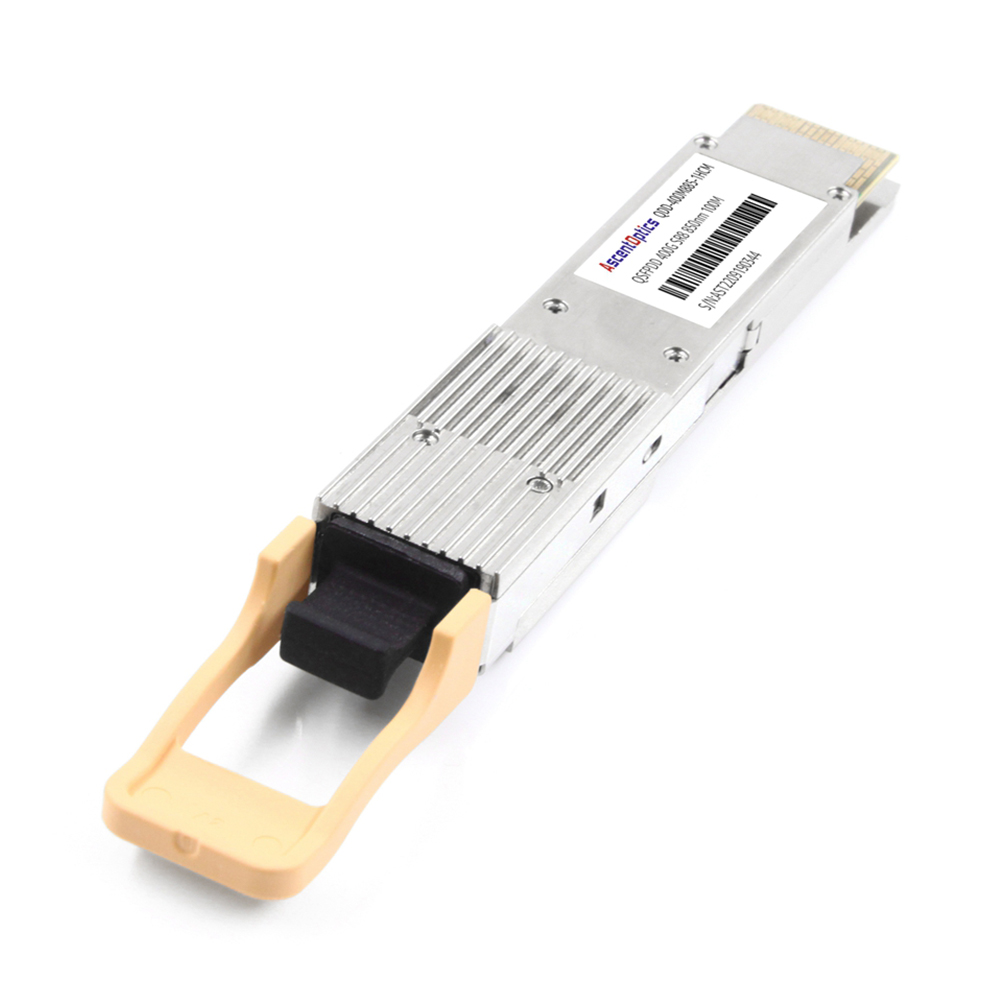
Scalability and higher bandwidth requirements necessitate the utilization of 400G QSFP-DD in contemporary data centers and high-speed networks. It can provide a faster data transfer rate, reduce latency, and enhance network efficiency, thus suitable for handling huge scope cloud computing, AI workloads, and real-time data processing. Moreover, its small size enhances space efficiency as well as energy consumption which is important for scale operating centers.
Ethernet standards are continuously changing to be faster and more efficient in data transmission as the need for higher rates rises. The transition to 400G Ethernet technology is a big change that supports hyper-scale data centers, 5G infrastructures, and advanced AI-based workloads. This would increase capacity per network by up to 400Gb/s while its power consumption per bit decreases significantly. For example, I00-dimensional ethernet could handle modern workloads like video streaming, big data analytics, and IoT ecosystems.
Recent industry developments indicate that the latest generation of 400G technologies uses advanced modulation schemes such as PAM4 (Pulse Amplitude Modulation) that can deliver higher data rates within a given spectral bandwidth. On top of this, new optical transceivers like QSFP-DD modules have been invented with enhanced scalability, enabling seamless integration into existing infrastructures. These improvements cut costs and facilitate small-size designs.
Many industries use 400G Ethernet, which is known for its widespread application to datacentres worldwide. The global market for 400G Ethernet has been reported to increase rapidly, with estimates indicating a CAGR rate of more than thirty percent (30%) for five years. This fast uptake highlights the key importance of 400G technologies in meeting growing bandwidth requirements necessitated by emerging technologies.
The QSFP-DD (Quad Small Form Factor Pluggable Double Density) transceiver is crucial in deploying 400G Ethernet, through provided interface for fast data transfer. Eight electrical interfaces supporting lanes per QSFP-DD module can handle up to 50 Gbps of data each, and this results in an aggregated bandwidth of 400 Gbps. This makes it ideal for applications that need high density and scalability, like high-performance networks, cloud computing, or data centers.
QSFP-DD transceivers are backward-compatible with existing QSFP/QSFP28 ports. This allows organizations to upgrade to 400G infrastructure without replacing their entire system. Paired with compatible passive or active copper and optical cable assemblies, QSFP-DD facilitates low-latency and energy-efficient connections over varying distances. For instance, AOCs (active optical cables) can cover extended ranges of up to 100 meters or more for large-scale deployments. While DACs (direct attach copper) cables are better suited for shorter intra-rack connections due to their lower cost and power usage.
Since 2023, the QSFP-DD ecosystem has grown rapidly, with increased usage showing it is a key tool for high-capacity data transmission.
Standards like the QSFP-DD Multi-Source Agreement (MSA) ensure product compatibility, allowing faster integration into existing 400G solutions.
Recent updates show continued innovation, including better thermal management and improved power efficiency. These establish its position as a key driver of next-generation networking solutions.
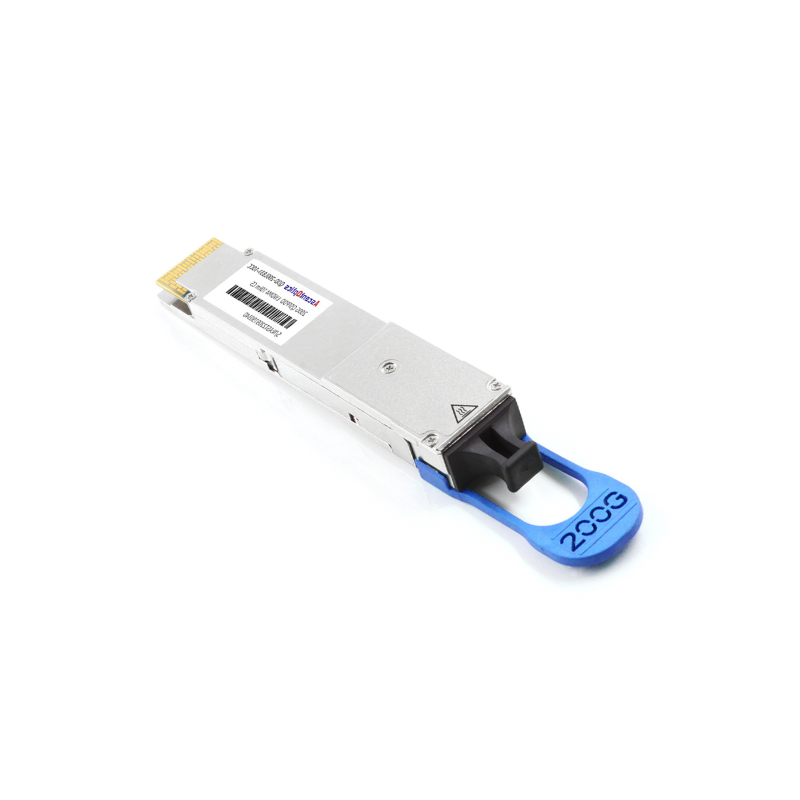
Taking the lead in high-speed networking, QSFP-DD 112G is setting new standards for data center interconnects. It has a native lane rate of 112 Gb/s per PAM4 channel. In an 8-lane configuration, it supports aggregated data rates of up to 800 Gb/s. This makes it ideal for hyperscale data centers, 5G networks, and AI/ML workloads.
Higher Data Rates:
Thermal Management:
Backward Compatibility:
Reduced Signal Integrity Challenges:
Hyperscale Data Centers:
5G Networks:
AI and Machine Learning:
The advent of materials, production, and analysis has seen QSFP-DD 112G technology making great strides in responding to the unending requirement for bandwidths and speeds within next-gen network infrastructures. This demonstrates how engineering innovation plays an important role in enabling scalable, efficient, & future-proof connectivity solutions.
A: QSFP-DD (Quad Small Form Factor Pluggable Double Density) is an enhanced transceiver format that increases the capabilities of the standard QSFP. It has been made to allow up to 400G speeds and beyond while being compatible in reverse with existing QSFP modules. The “Double Density” means it provides two times more bandwidth as compared to what is found in a similar form factor of a QSFP.
A: Key features of QSFP-DD transceivers include support for speeds up to 400G, which can be expanded to 800G, backward compatibility with other QSFP modules, utilization of Common Management Interface Specification (CMIS) for better management as well as multiple media support such as SMF (Single Mode Fiber) and passive copper cables.
A: Backward compatibility is accomplished with this design via the use of the 1×1 cage and connector system. A connection from a QSPP-DD port can be established via both standard QSFF and mini-QSFF connectors; this allows a smooth transition into higher rates without having to overhaul existing infrastructure systems. This also extends to include network upgrades involving even some versions of QPSP-28 modules together with Worldwide Interoperability for Microwave Access in order to upgrade its communication level among others thus conferring enhanced flexibility on these networks.
A: The QSFP-DD supports 200G and 400G mainly and can be implemented up to 800G in the near future. It also has backward compatibility allowing it to support lower speeds hence it is ideal for various networking needs.
A: In comparison to standard QSFP that uses a 4X interface, the form factor of QSFP-DD uses an electrical interface of 8X. This makes provision for more bandwidth and allows for higher data rates. With the pluggable transceiver design being 8x, the speed of QSFP-DD can increase from its current level at 400G towards possibly achieving up to 800G.
A: Various cable types including fiber optic cables (such as SMF) for long distances and passive copper cables for short runs. The cage and connector design specified by the QSFP-DD hardware specification make it interoperable across different vendors. These plugs cater to 400G or higher speeds.
A: On the host board, QSFP-DD interfaces with network equipment through QSFP-DD ports. These ports typically connect to the network device’s ASIC (Application-Specific Integrated Circuit). The QSFP-DD format supports multiple interface standards such as CAUI-4 that provide efficient data transmission from the transceiver to the host equipment.
A: Network infrastructure has many applications for QSFP-DD, particularly data centers, cloud computing environments, and high-performance computing. This is used in switches, routers, and servers needing connections with a large bandwidth. In addition to AI and machine learning infrastructures, this includes advanced telecommunications networks working on InfiniBand technologies too.
1. Integrated Silicon Photonics Transmitters within a QSFP-DD Transceiver Operating at400GBASE-DR4
2. Live Demonstration of Silicon-Photonics-Based QSFP-DD 400GBASE-DR4 Transceivers for Datacenter Applications
3. Ethernet
4. Small Form-factor Pluggable
5. Transceiver